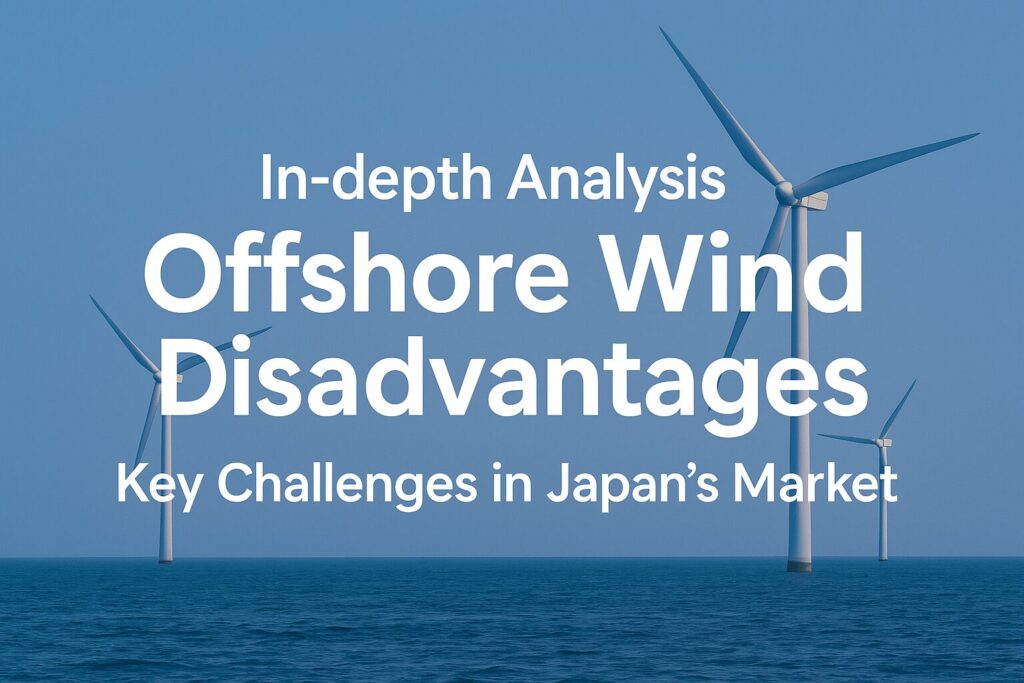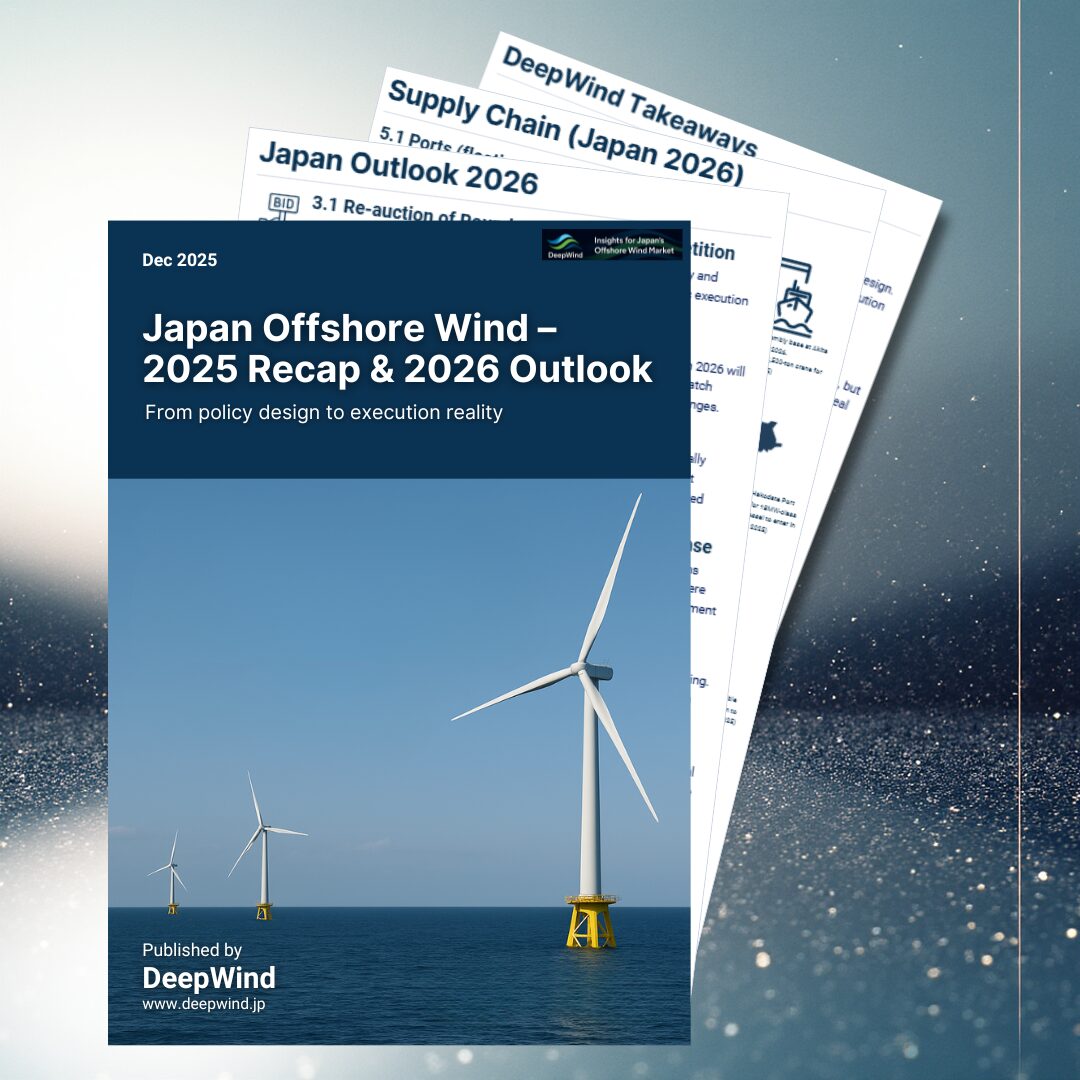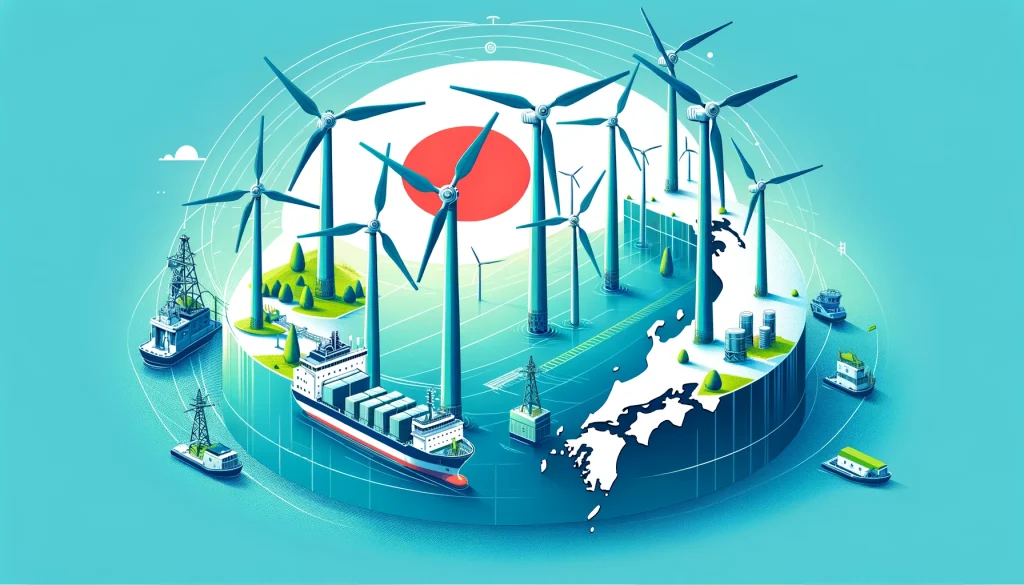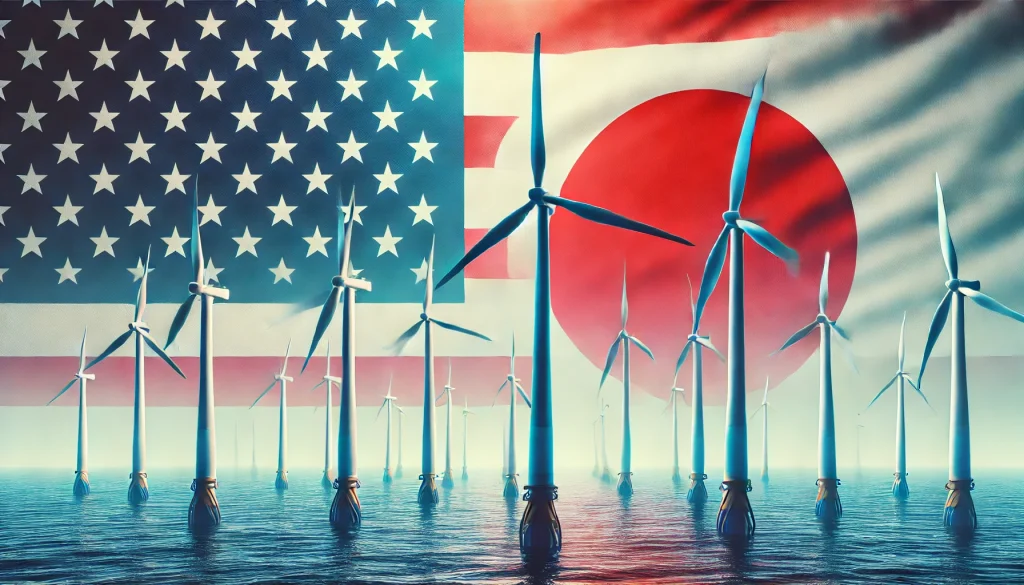Introduction
Offshore wind power is often viewed as a cornerstone for achieving a decarbonized society. Leveraging vast offshore areas and stable wind conditions, it offers the potential for large-scale renewable energy production. However, offshore wind is not without challenges.
This article highlights the disadvantages of offshore wind power, focusing especially on the Japanese market. From economic hurdles to environmental, technical, and social issues, DeepWind provides a comprehensive analysis to help investors, developers, and policymakers make informed decisions.
Economic Challenges: High Cost Structure
The biggest issue is the high cost of offshore wind in Japan.
| Cost Category | Japan | Europe |
|---|---|---|
| Initial Investment (CAPEX) | High (reliance on imported equipment, complex regulations) | Falling (economies of scale, technology maturity) |
| O&M Costs | High (difficult offshore work) | Decreasing (operational efficiency) |
| Transmission Costs | High (long subsea cables from remote sites) | Relatively low (developed grid infrastructure) |
| Decommissioning Costs | Expensive (immature technology) | Similarly expensive |
Result:
Japan’s LCOE (Levelized Cost of Energy) can be nearly twice that of Europe. Ultimately, this leads to higher electricity prices and potential negative impacts on household finances and industrial competitiveness.
Environmental and Visual Impacts
Although renewable, offshore wind power affects the environment.
| Impact Type | Affected Species/Environment | Specific Concerns |
|---|---|---|
| Noise & Vibration | Whales, dolphins, fish | Disturbance during construction, habitat avoidance |
| Electromagnetic Fields | Fish, benthic species | Potential impact on migration and physiology |
| Physical Structures | Marine life, birds | Habitat fragmentation, potential artificial reefs |
| Blade Collisions | Migratory birds, bats | Bird strikes |
| Visual Impact | Tourists, local residents | Landscape degradation, tourism decline |
Especially in Japan, coastal fisheries and scenic coastlines are vital for local economies and cultures, making visual and environmental concerns more pronounced.
Technical Difficulties in Installation and Maintenance
- Specialized vessels required for large turbines
- Typhoon- and earthquake-resilient designs necessary
- Frequent work suspension due to rough seas
- High transmission costs due to long distances
Additionally, decommissioning remains an unresolved technical and financial challenge.
Social Resistance: Fisheries and Local Communities
- Fisheries: Loss of fishing grounds, reduced catches
- Tourism: Negative impact from landscape degradation
- Residents: Concerns over noise, vibration, and visual impact
Japan’s coastal communities are deeply tied to fisheries and local landscapes, making public acceptance a major challenge. Conflict between traditional industries and offshore wind projects is not easily resolved through compensation alone.
Complex Regulations and Institutional Delays
- Permitting involves multiple agencies and regulations
- Lengthy lead times due to complex approval processes
- Lack of clear regulations for offshore land use rights and decommissioning responsibilities
These regulatory hurdles increase investment risks and delay project development, putting Japan at a disadvantage compared to Europe.
Supply Chain and Infrastructure Constraints
- Heavy reliance on imported parts and vessels
- Port infrastructure inadequate for large components
- Grid infrastructure insufficient for large-scale offshore wind integration
Without strengthening the domestic supply chain, Japan risks project delays and vulnerability to geopolitical risks.
Offshore Wind: Not a Silver Bullet
Offshore wind power offers great potential, but it is far from a perfect solution. Japan faces:
- High costs
- Environmental and social opposition
- Technical and operational challenges
- Regulatory and supply chain bottlenecks
Adopting offshore wind successfully in Japan requires realistic understanding of these challenges and strategic planning beyond merely copying European models.
Path Forward
To overcome these complex hurdles, Japan needs:
- Technology innovation (e.g., floating foundations, disaster resilience)
- Domestic supply chain development
- Port and grid infrastructure upgrades
- Regulatory reform and risk-sharing mechanisms
- Coexistence models with fisheries and local communities
Recognizing the disadvantages is the first step toward building a sustainable, resilient energy system for Japan’s energy independence and carbon neutrality.
Explore more categories at DeepWind:
- 🔍Market Insights – Understand the latest trends and key topics in Japan’s offshore wind market
- 🏛️Policy & Regulations – Explore Japan’s legal frameworks, auction systems, and designated promotion zones.
- 🌊Projects – Get an overview of offshore wind projects across Japan’s coastal regions.
- 🛠️Technology & Innovation – Discover the latest technologies and innovations shaping Japan’s offshore wind sector.
- 💡Cost Analysis – Dive into Japan-specific LCOE insights and offshore wind cost structures.



